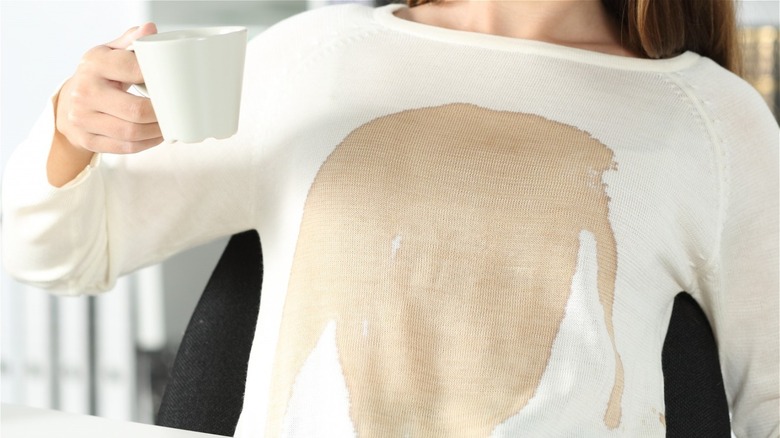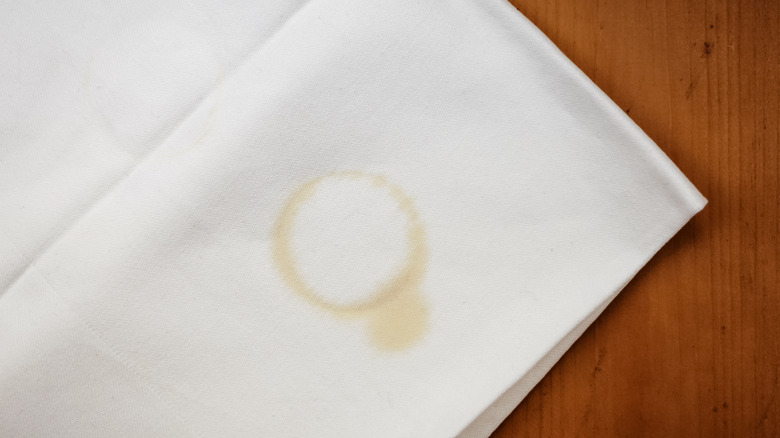The Reason Dried Coffee Stains Have Dark Edges
The United States is full of coffee drinkers. According to the National Coffee Association, 62% of American adults sip a hot or cold brew every single day, while 70% have a cup of joe at least every week. And interestingly, the survey also revealed that Americans are leaning more toward high-caffeine, high-quality drinks, such as those made with espresso, including cappuccinos, lattes, and flat whites. We really love our coffee.
But if you're like most Americans, you're not perfect. That means you had probably had a moment where you accidentally spilled a bit of your caffeinated beverage, whether onto your freshly-steamed shirt or just-cleaned countertop. And if you've let it dry, you might have noticed that coffee stains are not like other stains. Rather than evaporating evenly and leaving one flat mark, they appear to dry in more of a ring. The center is almost entirely stain-free, while the outer edges are completely dark. But why?
Dried coffee stains have noticeably dark edges
Believe it or not, there is actually a scientific explanation as to why the edges of a coffee stain are always darker than the middle. According to Mental Floss, the edge of a coffee stain evaporates faster than its center. But rather than the edges simply disappearing, the coffee actually gets trapped at the edges, likely by small particles. As a result, the edges of the stain don't recede in the way other liquids do as they dry.
Instead, since the edges evaporate faster, the liquid from the center of the stain gets pulled to those edges to keep up with the quicker evaporation speed. Solid bits of the coffee shift to the outer edges as well, which darkens the stain as the process continues. The coffee stain has essentially created more of a ring than an actual stain by the end of it. Coffee isn't the only liquid for which this happens — wine and ink are part of the same phenomenon.

